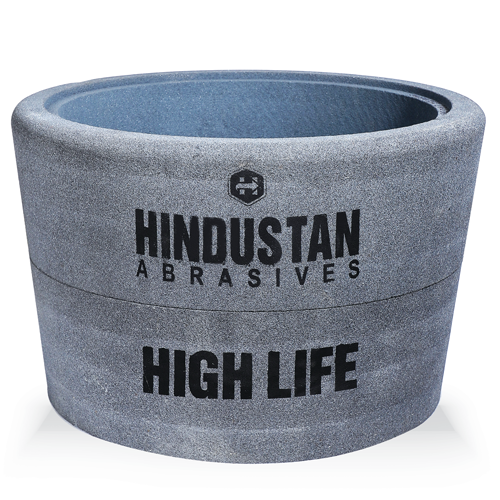Rice Cone Polisher: Enhancing the Quality and Shine of Milled Rice

Rice is a staple food for billions of people across the world. However, before rice reaches our plates, it goes through several processing stages to ensure quality, taste, and appearance. One critical machine in this journey is the Rice Cone Polisher — a powerful tool that gives rice its final polish, enhancing its shine and value in the market.
In this blog, we’ll explore what a rice cone polisher is, how it works, its benefits, features to look for, and how it plays a vital role in modern rice mills.
🔍 What is a Rice Cone Polisher?
A rice cone polisher is a type of rice milling machine used in the final stage of rice processing. Its main function is to polish white rice, improving its appearance, smoothness, and shelf life. The machine uses a conical roller system to gently rub the surface of the rice kernels, removing bran particles and giving the grains a shiny, silky finish.
This polishing process is especially important in the production of high-quality rice varieties like Basmati, Sona Masuri, and Jasmine rice, which are judged not only by their taste and aroma but also by how glossy they look.
⚙️ How Does a Rice Cone Polisher Work?
The rice cone polisher operates based on frictional polishing. Here’s a simplified breakdown of how it works:
-
Feeding: Milled rice (white rice) is fed into the polisher.
-
Conical Roller Action: The rice passes through a rotating cone or conical roller fitted with abrasives.
-
Friction Polishing: As rice grains rub against the surface of the cone and the screen, fine layers of bran are removed, creating a polished surface.
-
Air Blowing System: Some polishers also include a blower system that removes broken grains, dust, and excess heat.
-
Discharge: The polished rice is discharged and ready for packaging or further grading.
🏭 Why Use a Rice Cone Polisher?
Here are some compelling reasons why modern rice mills invest in high-quality cone polishers:
✅ 1. Enhanced Appearance
Polished rice has a cleaner and shinier surface, which appeals more to customers, especially in retail and export markets.
✅ 2. Better Market Value
Well-polished rice fetches higher prices, making it a profitable option for rice processors.
✅ 3. Removal of Surface Bran
The polisher removes leftover bran particles from the milled rice, increasing shelf life by reducing chances of spoilage.
✅ 4. Smooth Texture
Polishing helps rice grains achieve a uniform texture, improving cooking quality and presentation.
✅ 5. Compatibility with Parboiled and Raw Rice
Cone polishers can handle both raw white rice and parboiled rice, making them versatile and cost-effective.
🧪 Technical Specifications (May Vary by Manufacturer)
| Feature | Description |
|---|---|
| Capacity | 1 to 5 tons per hour |
| Motor Power | 5 HP to 25 HP |
| Roller Type | Conical (abrasive or friction) |
| Material | MS body with stainless steel parts |
| Polishing Grade | Single or multi-stage polishing |
| Automation | Semi-automatic or automatic |
| Cooling System | Air blower for heat control |
🔩 Key Components of a Rice Cone Polisher
-
Polishing Cone or Roller
The core part that does the actual polishing through friction. -
Screen/Perforated Cylinder
Controls the grain flow and assists in polishing. -
Feeding Mechanism
Ensures smooth and controlled flow of rice into the machine. -
Air Blower or Aspirator
Helps in removing heat, dust, and broken grains. -
Discharge Gate
For collecting polished rice efficiently.
🛠️ Maintenance Tips for Longevity
To get the best performance out of your rice cone polisher:
-
Regularly clean the screens and cones to prevent clogging.
-
Lubricate moving parts as per manufacturer recommendations.
-
Check and replace worn-out rollers or screens periodically.
-
Ensure proper cooling/airflow systems to avoid overheating.
-
Inspect for broken or cracked grains, as this can indicate incorrect settings.
🧾 How to Choose the Right Rice Cone Polisher
Before buying, consider these factors:
🔧 1. Capacity Requirements
Choose a machine based on your rice mill’s production scale (in TPH – tons per hour).
🔧 2. Type of Rice Processed
Ensure compatibility with raw, parboiled, or steamed rice varieties.
🔧 3. Level of Automation
For larger operations, opt for fully automatic polishers with digital controls.
🔧 4. Energy Consumption
Look for energy-efficient models to reduce long-term operational costs.
🔧 5. Brand & After-Sales Service
Choose a reputed manufacturer offering spare parts, warranty, and service support.
🛒 Popular Brands & Manufacturers
Some well-known Rice Cone Polisher manufacturers in India and abroad include:
-
Milltec
-
Satake
-
Bühler
-
Agromill
-
Perfect Equipments
-
Navbharat Industries
You can also find affordable cone polishers on platforms like IndiaMART, TradeIndia, Alibaba, or directly from local dealers.
🌎 Importance in Global Rice Trade
Polished rice is often a requirement for export, especially in markets like the Middle East, Europe, and the U.S., where customers prefer rice with a glossy, smooth appearance. Therefore, using a rice cone polisher isn't just about looks—it’s about meeting international quality standards.
💬 Final Thoughts
A Rice Cone Polisher is more than just a machine—it's a quality enhancer. From improving the visual appeal of rice to increasing its market value and shelf life, this machine plays a vital role in modern rice milling.
Whether you’re a small miller or running a large processing plant, investing in the right polisher will ensure your rice not only tastes great but also looks premium — making your product stand out in a competitive market.
📞 Call to Action
🔹 Looking for a reliable Rice Cone Polisher manufacturer?
🔹 Need help choosing the right capacity for your rice mill?
🔹 Want to upgrade your polishing system for export-quality rice?
📩 Contact us today for expert consultation, pricing, and demo support.
Let me know if you want a manufacturer-focused version, a Hindi version, or an SEO meta description and slug for your website.






